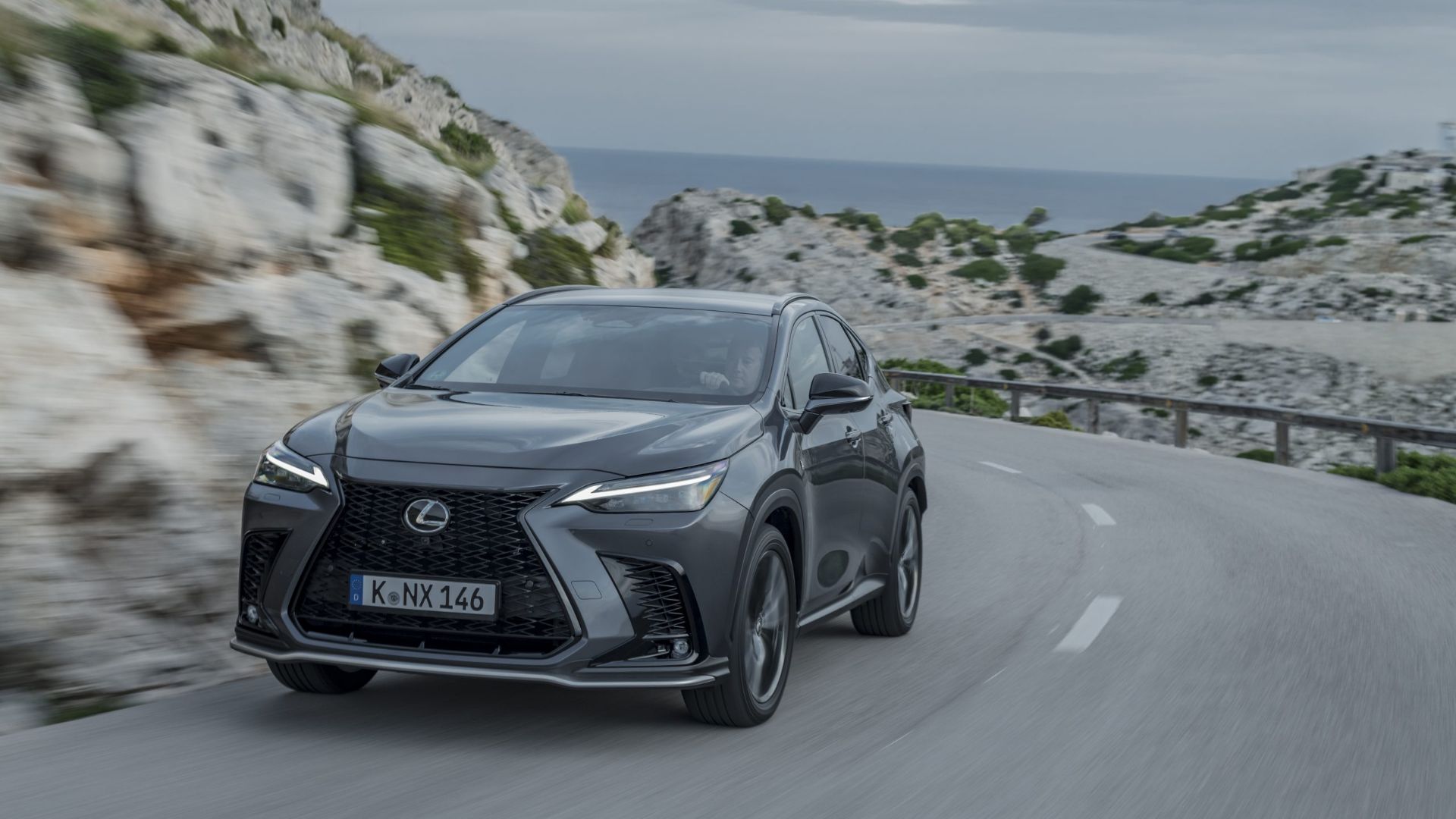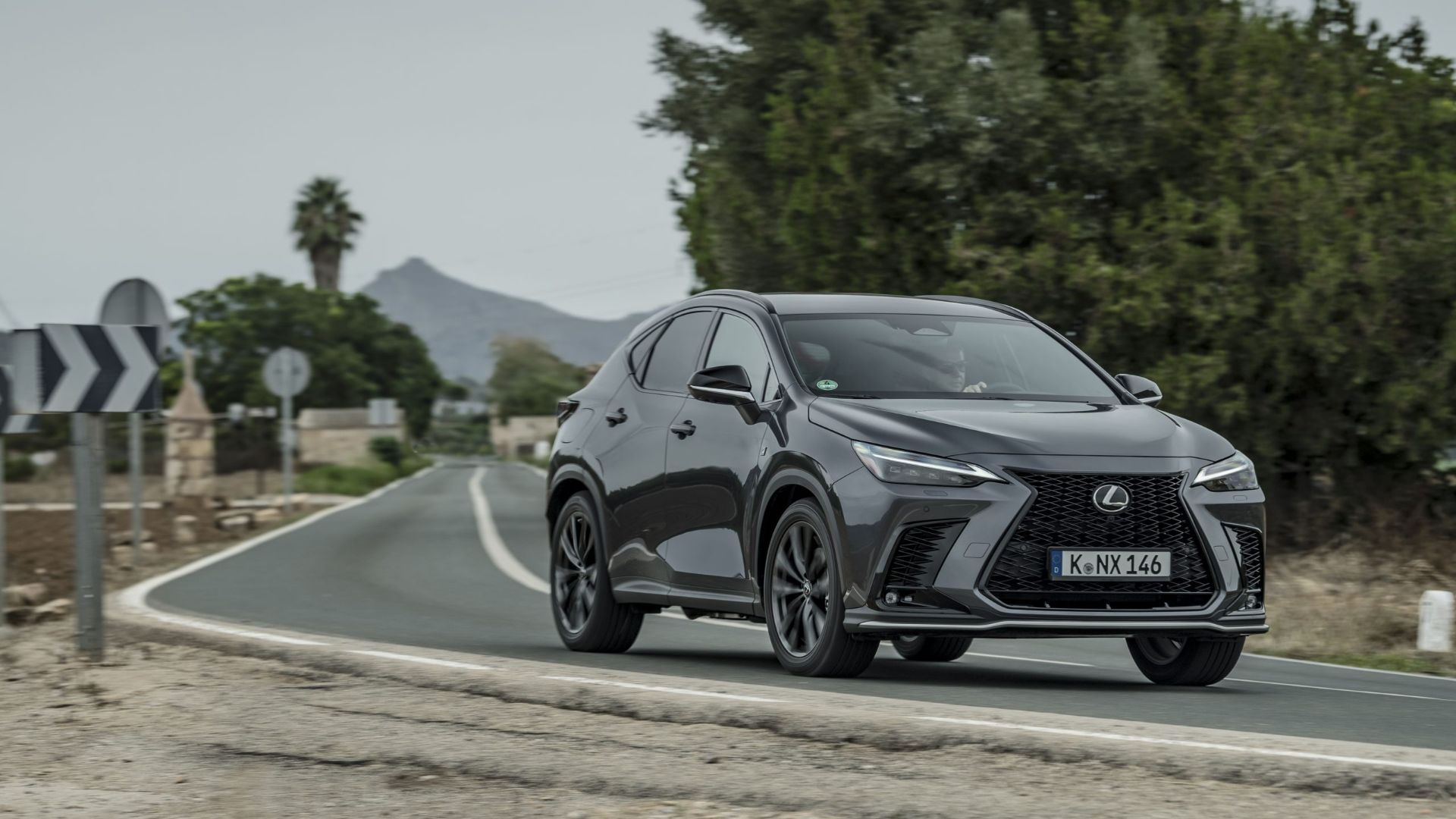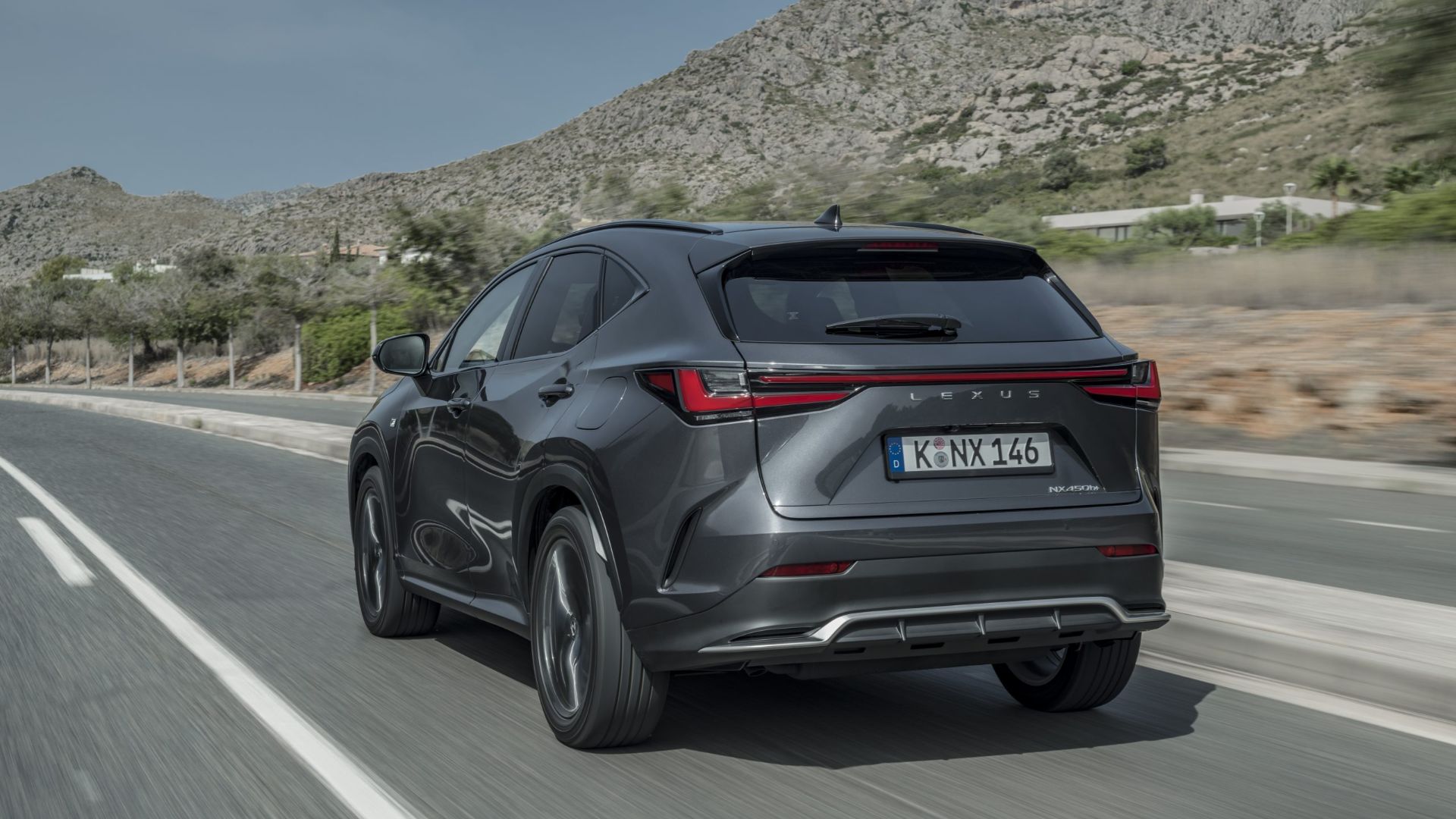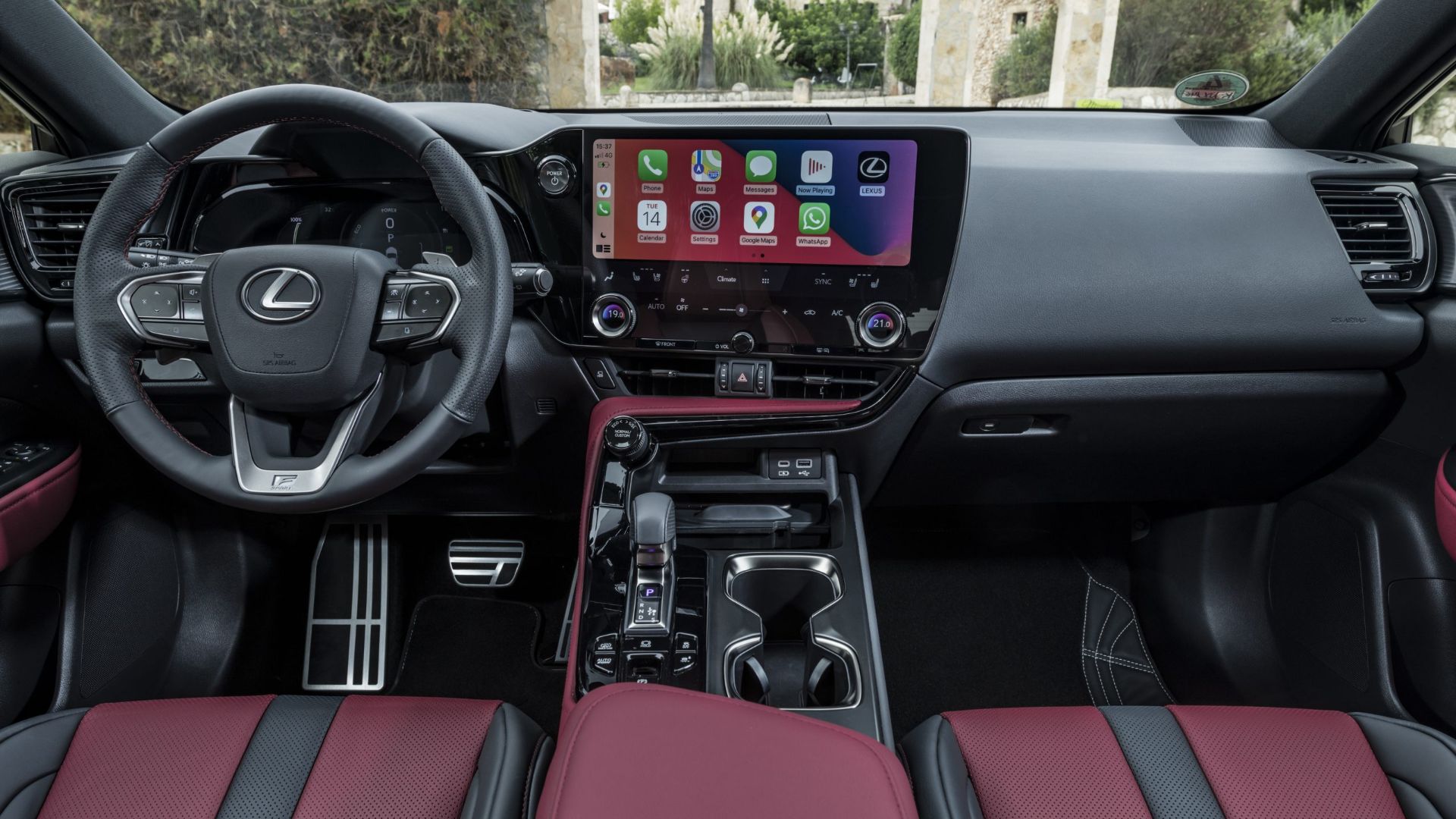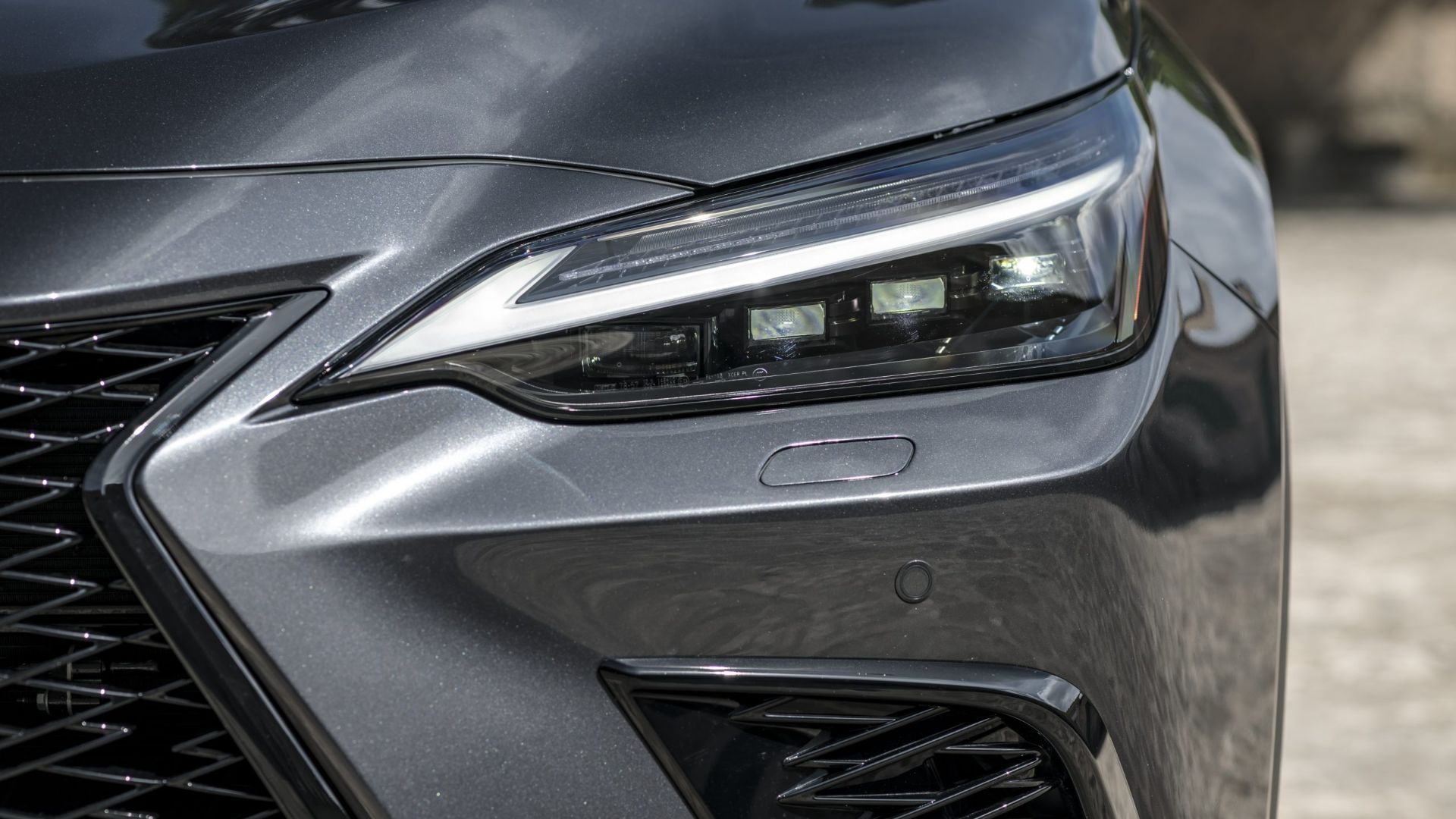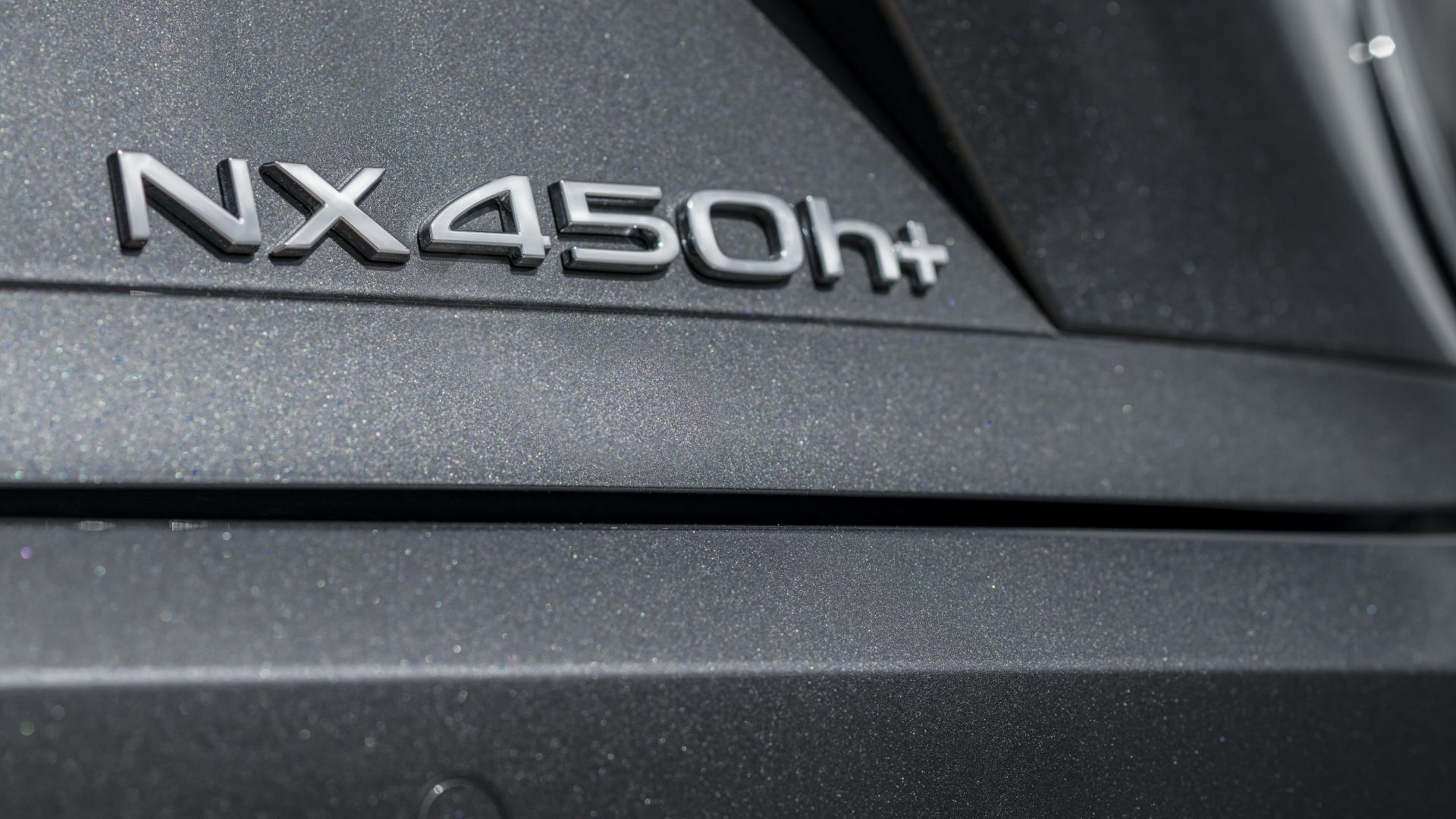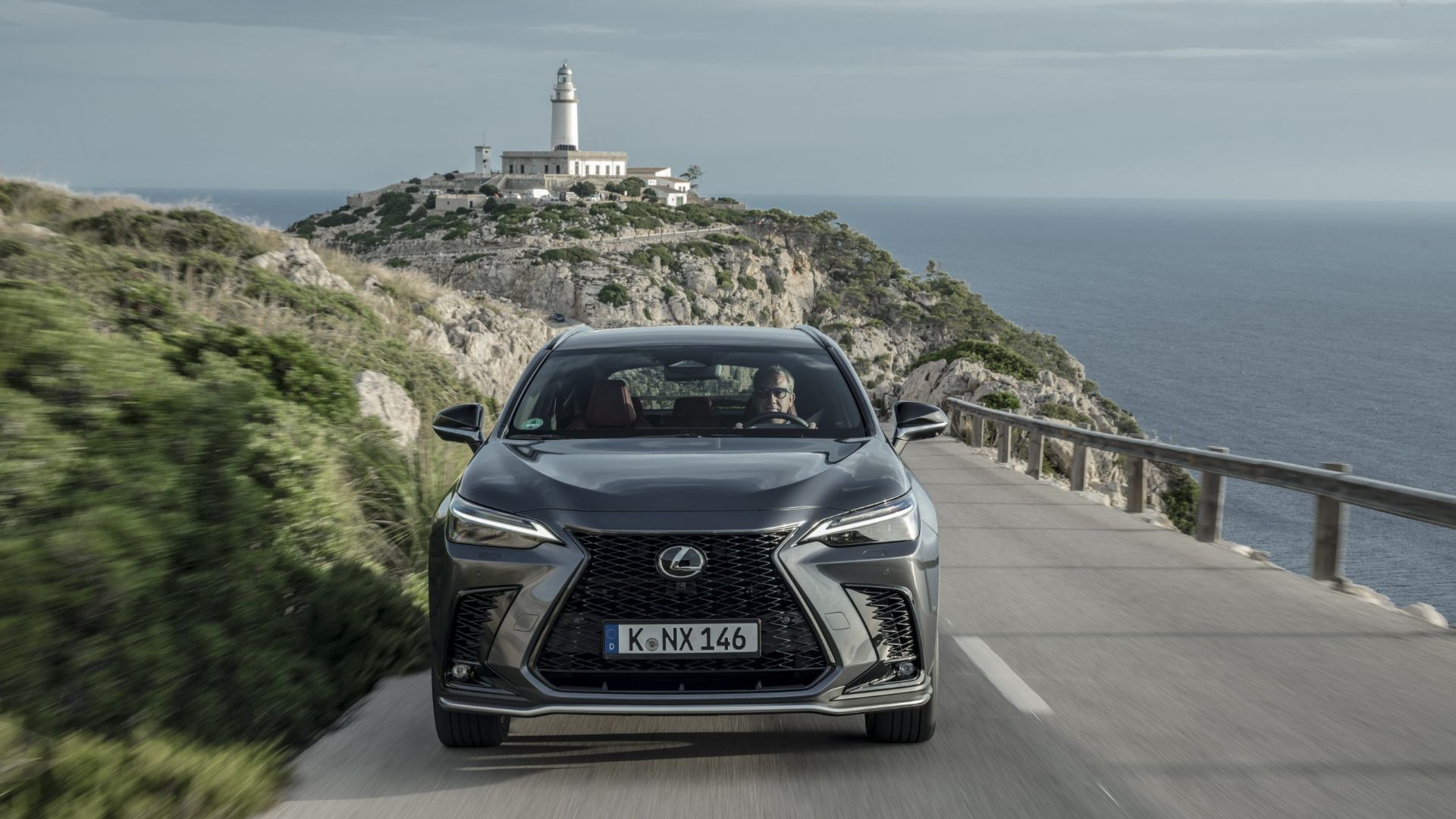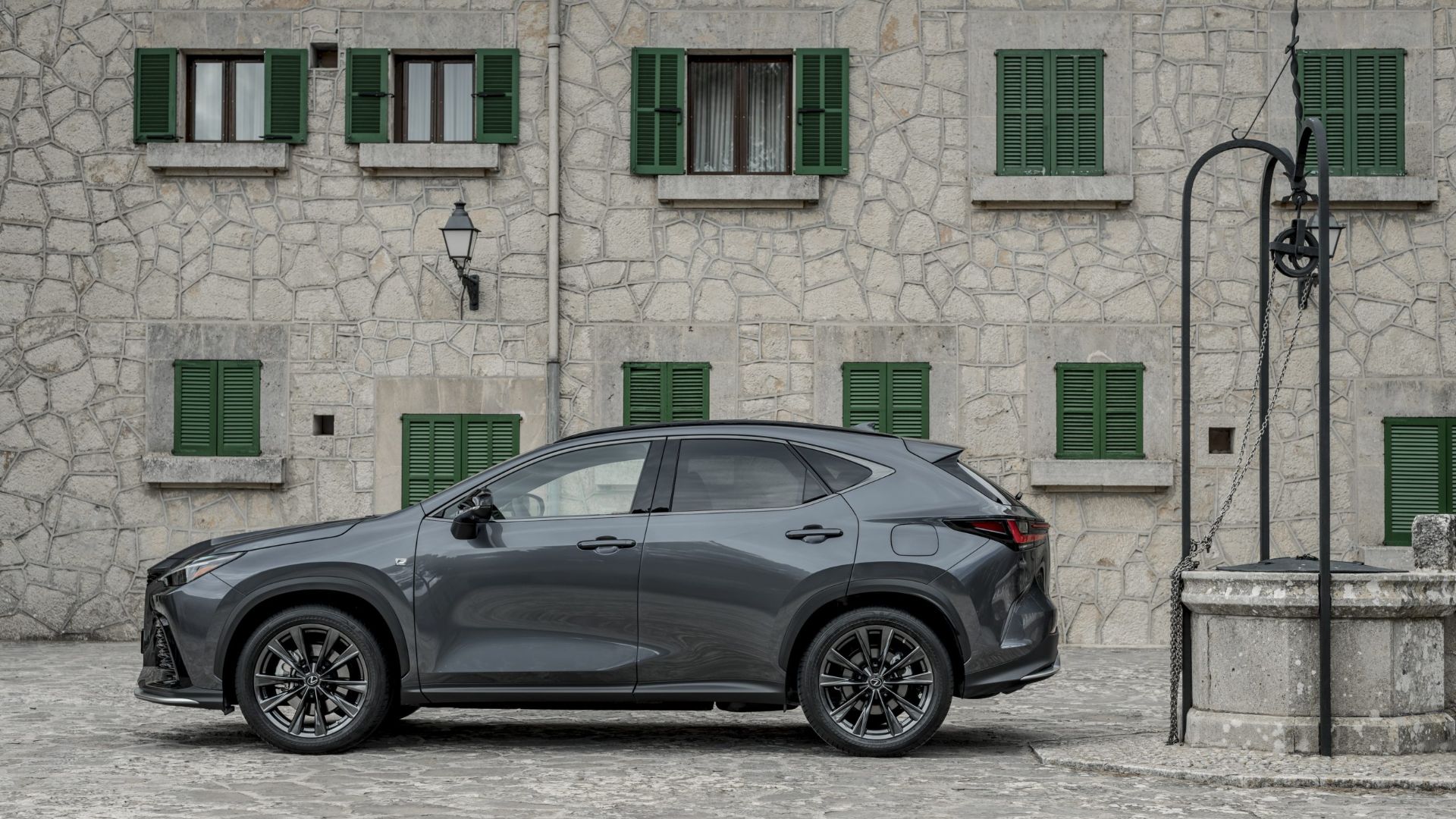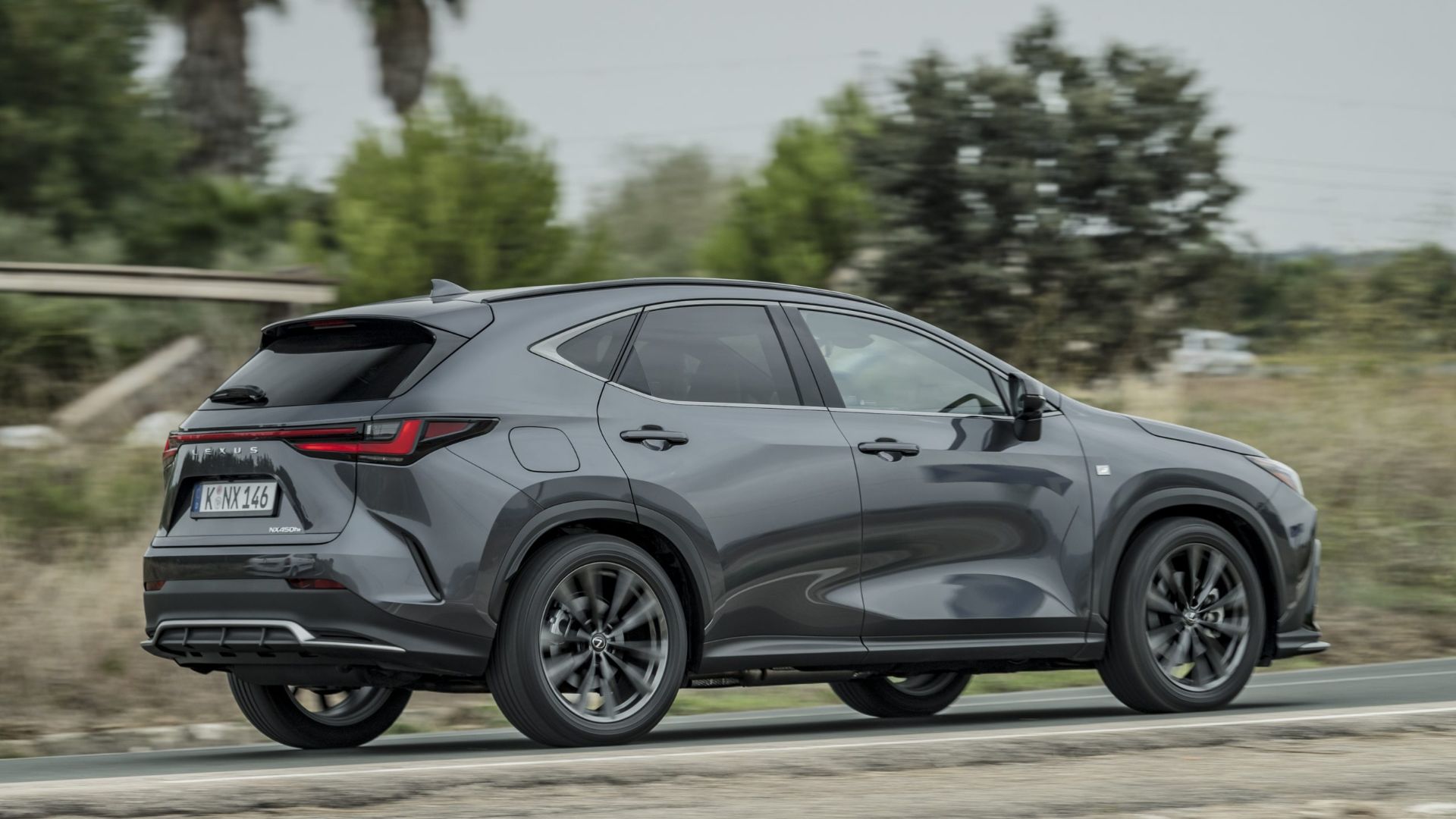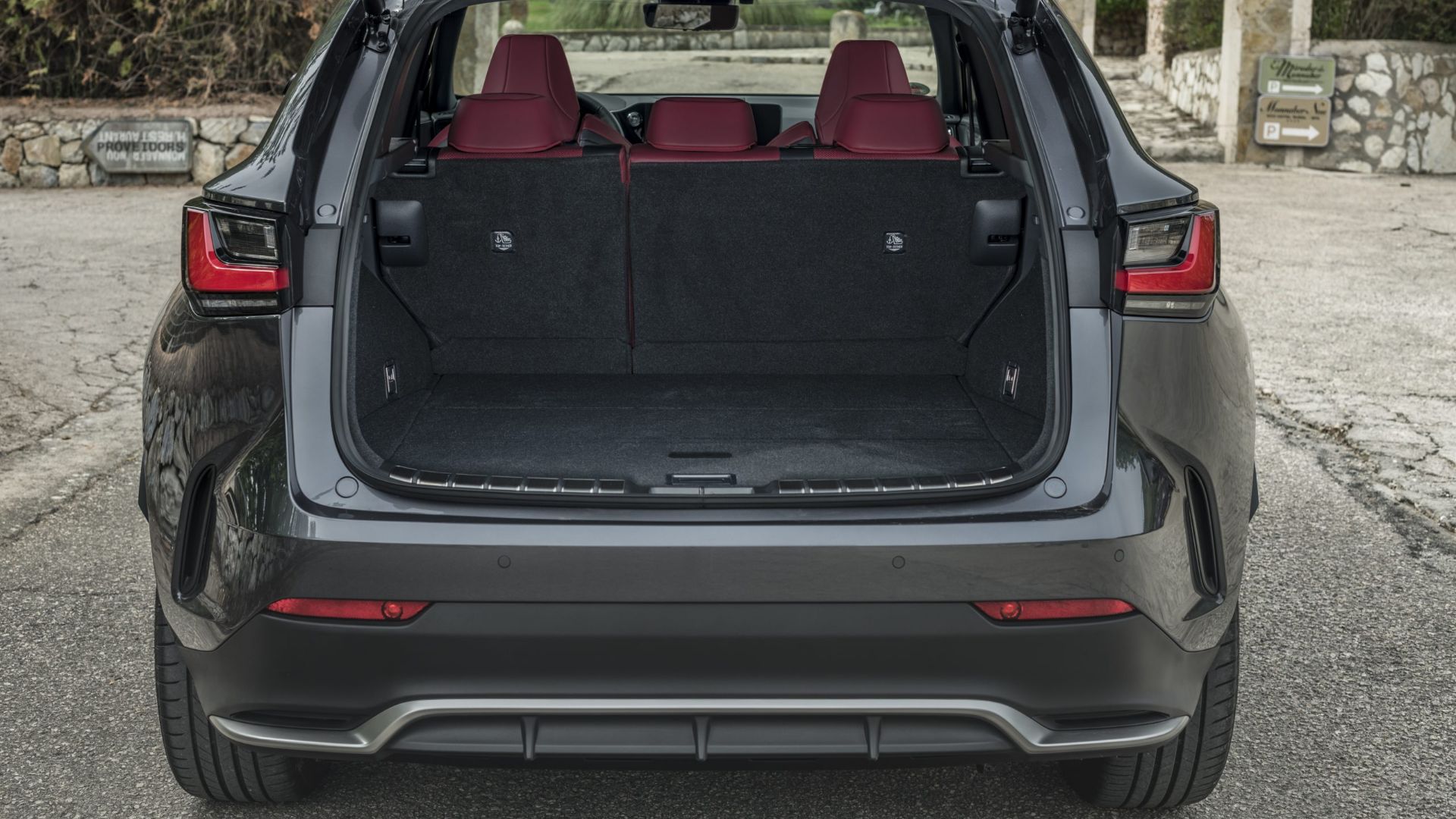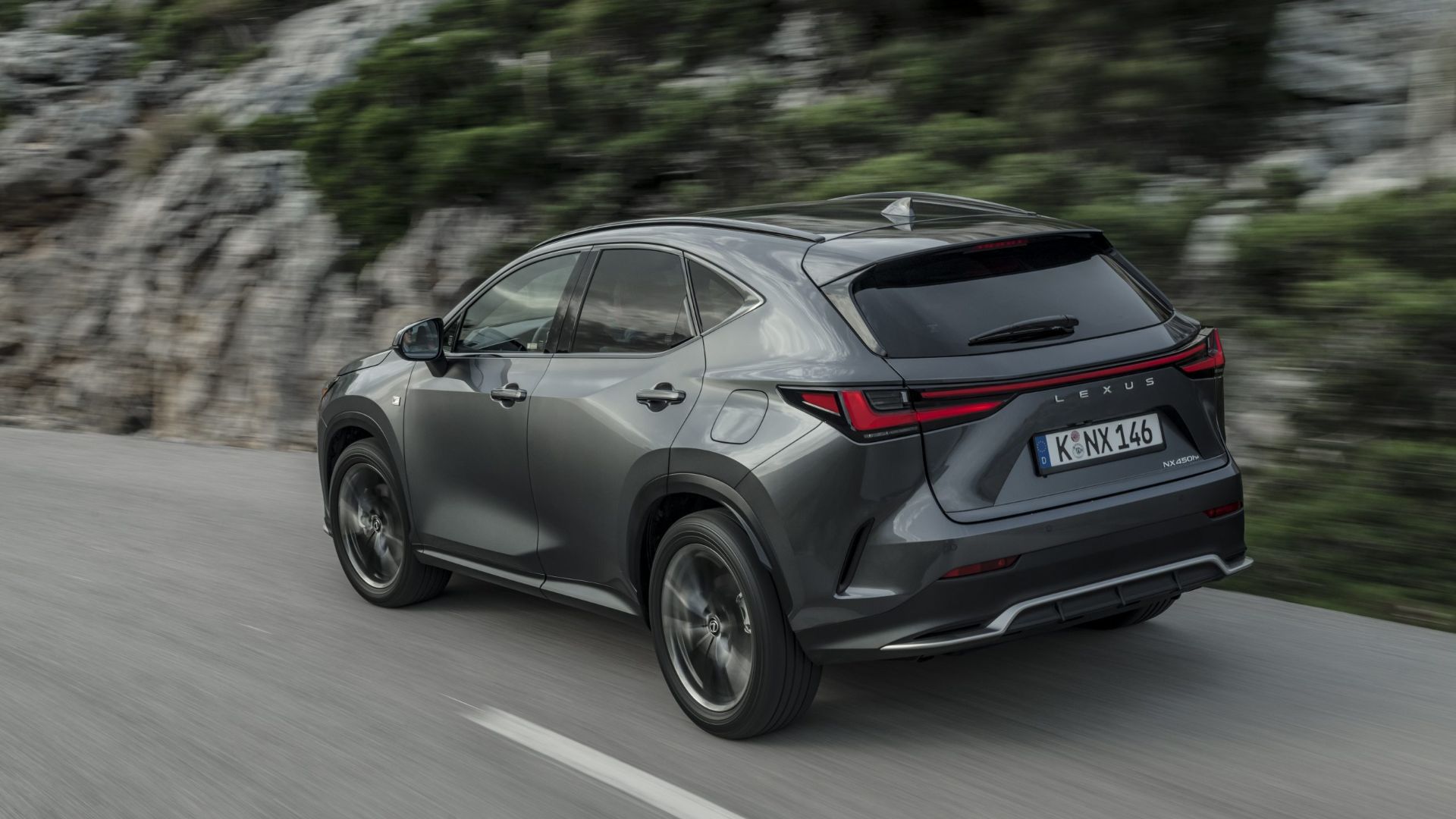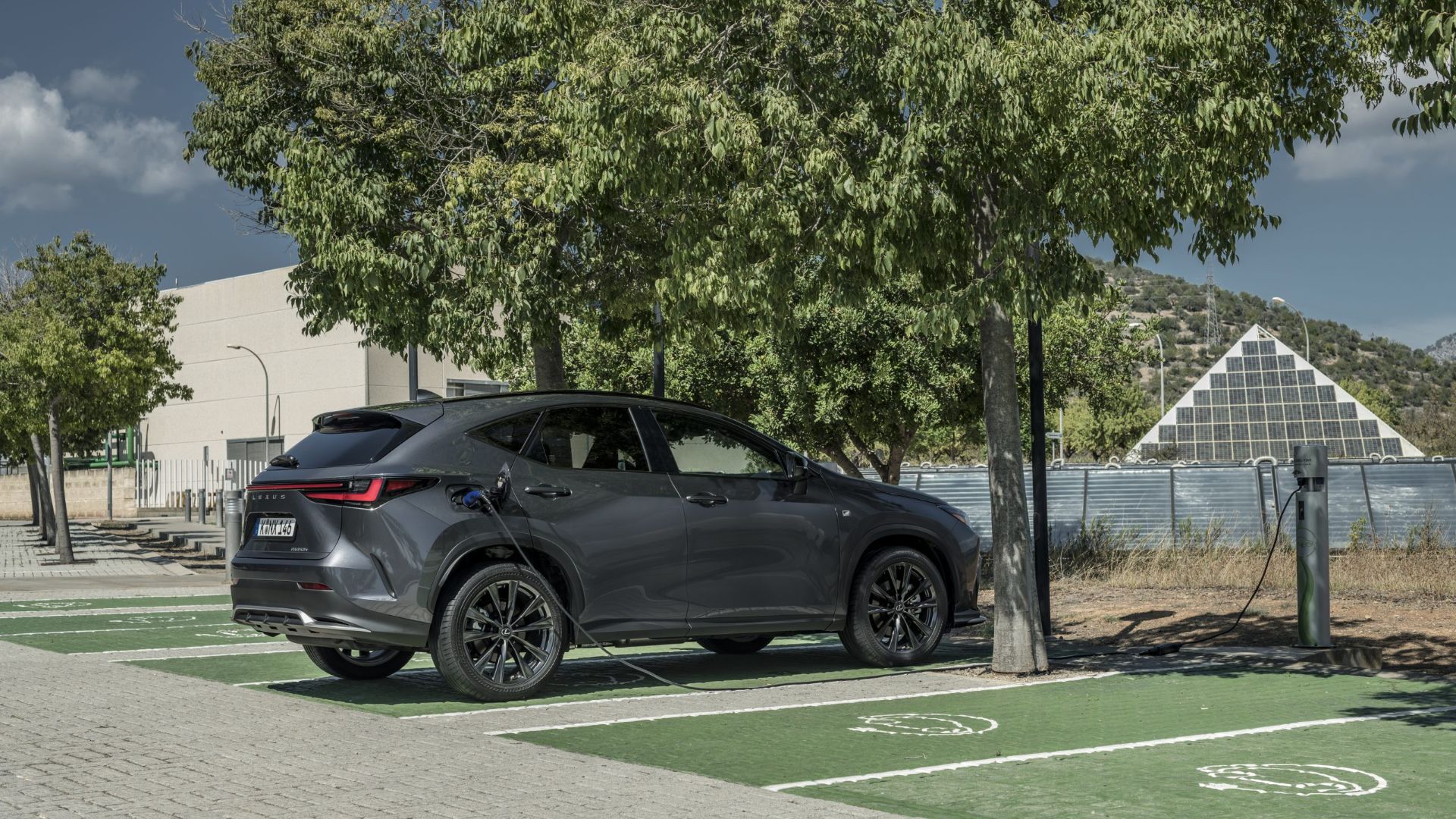Last year, 96 percent of Lexus cars sold in Western Europe were hybrids. By simple deduction, that means four percent were the stonking, V8-engined RC F and LC 500. But I digress…
The point is, while Lexus has embraced hybrids more readily than an inner-city Uber driver, it hasn’t ever sold a plug-in hybrid. Not until now.
Priced from £48,800, the NX 450h+ is a family-sized SUV to rival the Audi Q5, BMW X3 and Mercedes-Benz GLC. However, its clever tech could mean the lowest running costs of the lot – all without the limitations of a fully electric car.
Hybrid theory
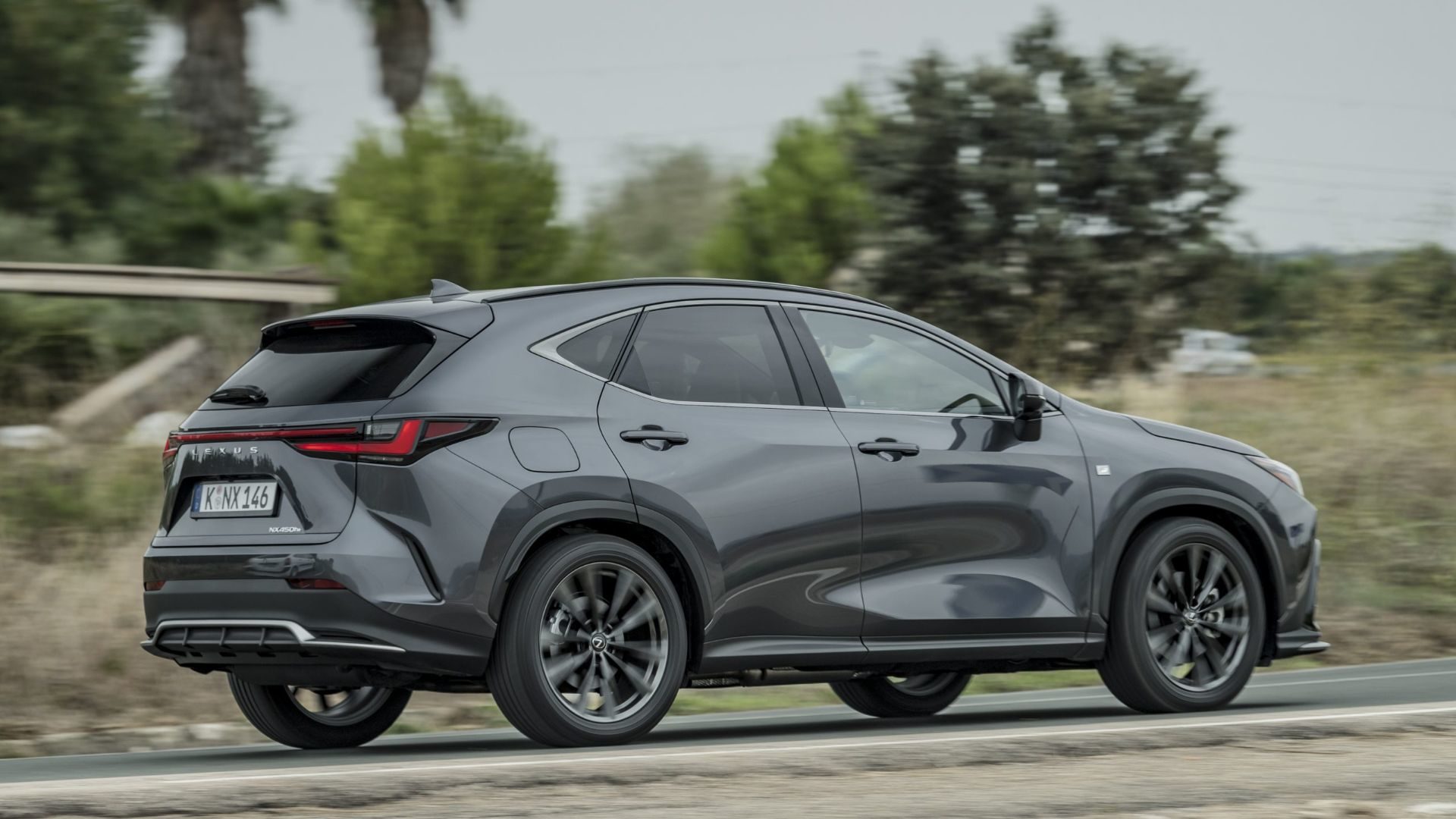
Before we get behind the wheel, a quick recap about how hybrids work. A hybrid car combines a petrol or diesel engine with an electric motor to boost efficiency. A regular hybrid, such as a Toyota Prius, captures kinetic energy while driving to replenish its batteries, and can’t be plugged in.
As the name suggests, a plug-in hybrid (also known as a PHEV) can be recharged like an electric car, which means a greater zero-emissions range. Charging the NX 450h+ takes 2.5 hours via a domestic socket, after which it covers 43-47 miles before the engine kicks in. Result: no range anxiety.
Plug-in hybrids also offer big tax benefits over their ‘self-charging’ siblings, as they complete much of the official fuel economy test in electric mode. In the NX’s case, CO2 emissions from 20g/km equate to a seven percent BIK rate for company drivers. Among comparable cars, only the Volvo XC60 Recharge goes so low.
Our survey says…
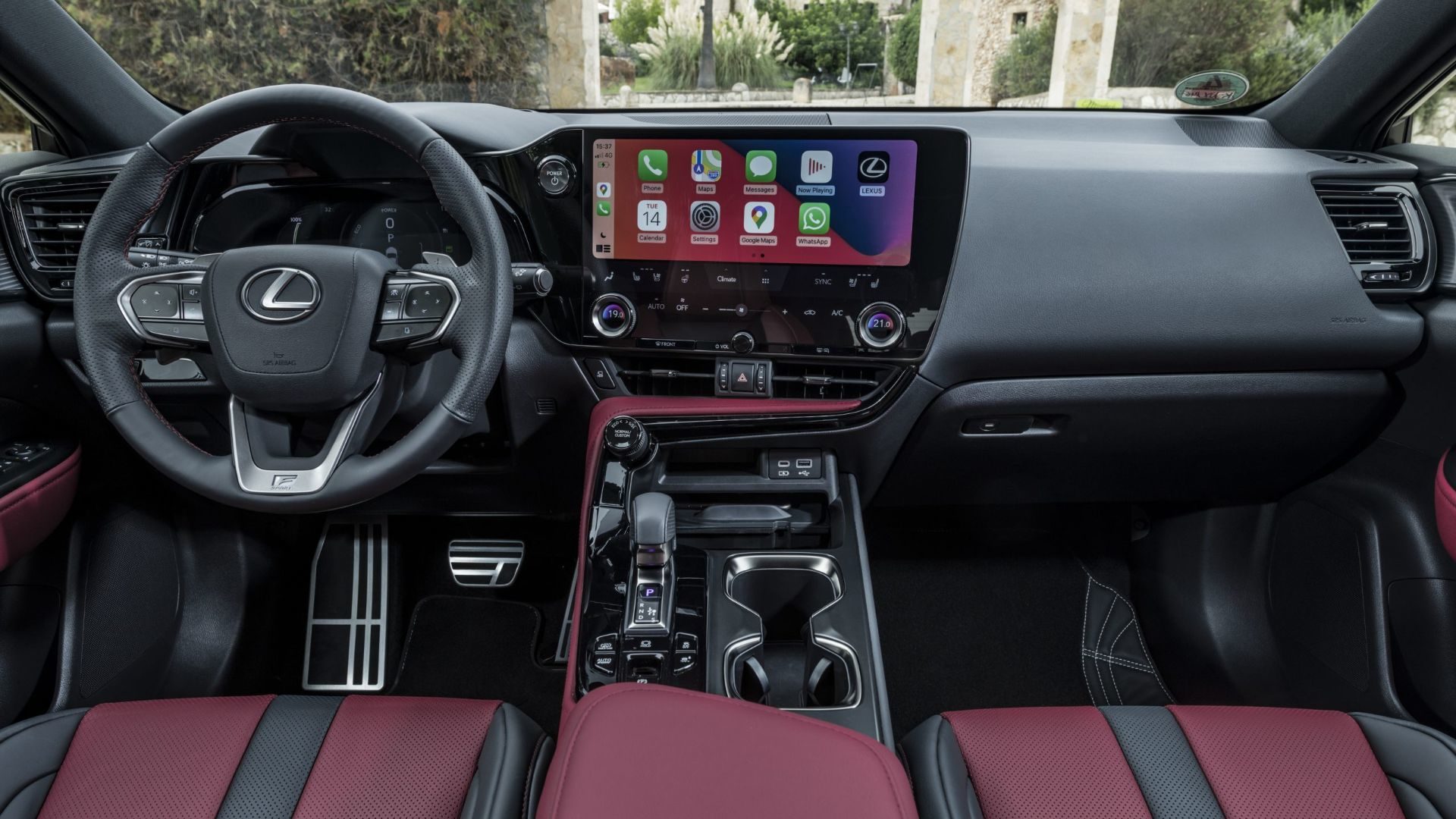
The NX 450h+ looks like a winner on paper, then. And that’s before we factor in Lexus’ near-flawless reliability and customer service. Read any customer survey by JD Power, Which? or What Car? and they all tell the same story. Oh, and don’t forget the industry-leading 10-year warranty, provided you keep servicing your car at a Lexus dealer.
Where Lexus tends to fall short – tyre-shredding V8 hooligans excepted – is emotional appeal. Here, the second-generation NX is business as usual: smooth and unobtrusive, but not remotely sporty – despite a combined 306hp from its 2.5-litre petrol engine and two electric motors.
The switch between power sources is seamless, and the E-CVT gearbox offers the linear feel of, yes, a fully electric car.
A question of F-Sport
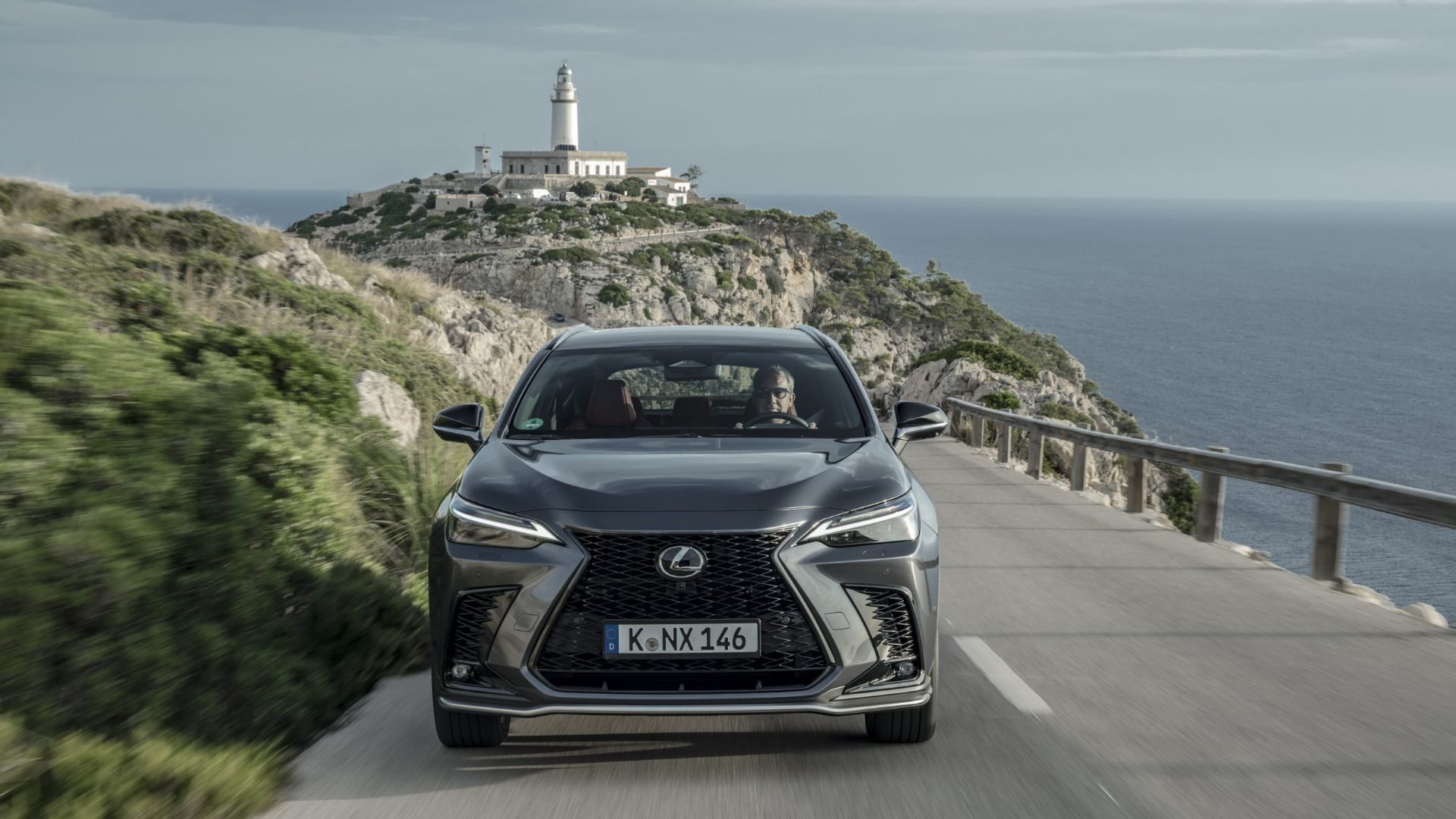
I drove the best-selling F-Sport (from £54,800), which enhances the angular and distinctive Lexus look with a black mesh grille, 20-inch alloy wheels and a tasteful bodykit.
It also, uniquely, comes with Sport and Sport+ modes to firm up the NX’s steering and adaptive dampers, making it feel more poised and planted on undulating roads. Even so, comfort is the priority here.
In the outgoing NX, such serenity was undone by the jerky point-and-click media controller, which felt like trying to play Whack-a-mole while piloting a two-tonne SUV. Thankfully, the new Lexus Link Pro system, which uses a 14-inch HD touchscreen, is as intuitive and slick as an iPad.
It’s supported by ‘Hey Lexus’ voice control and a head-up display that highlights switches as you press them, helping you stay focused on the road.
Slow-burn appeal
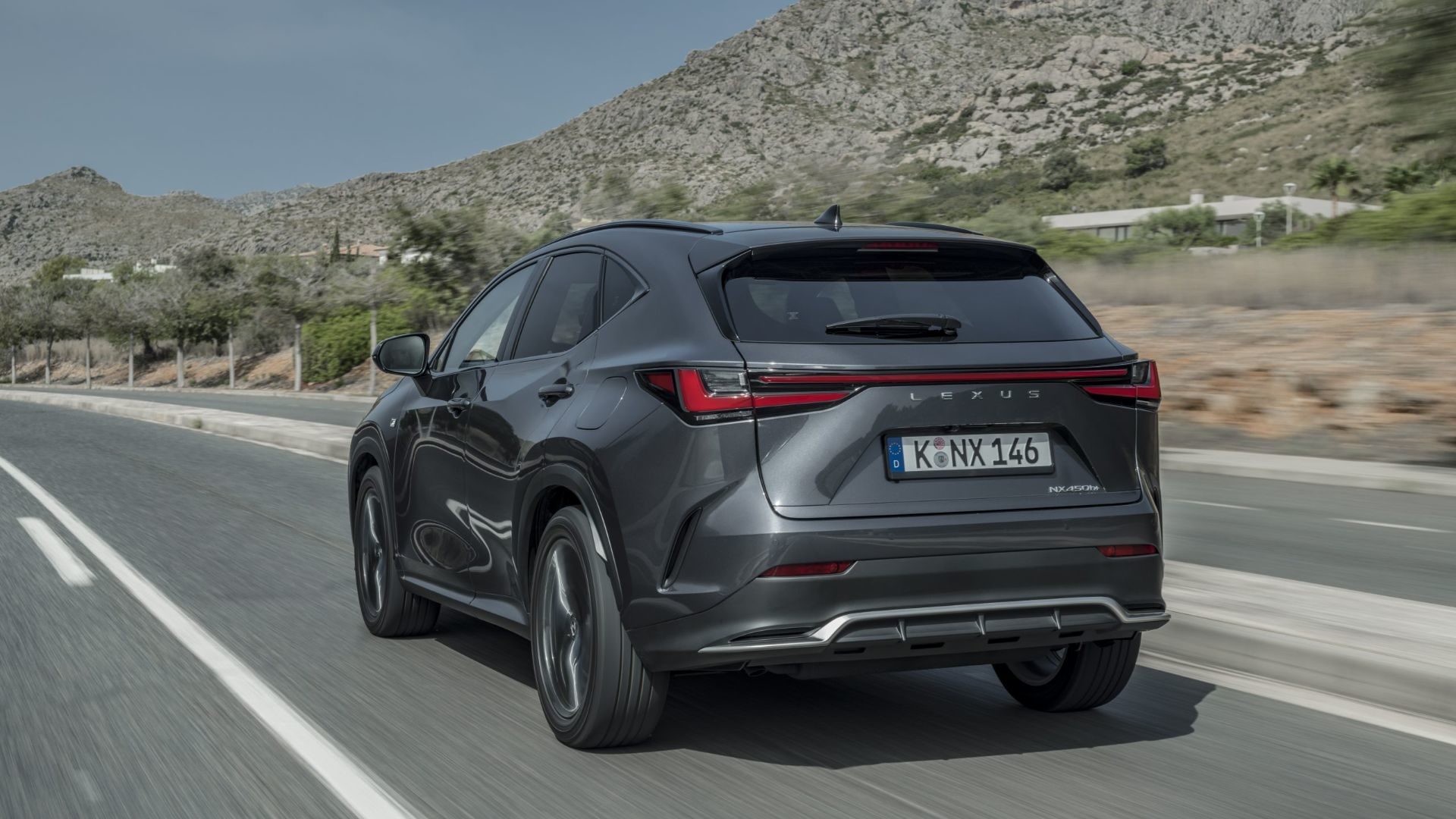
The NX 450h+ uses the same drivetrain as the cheaper Toyota RAV4 Plug-In, but its extra equipment and quality justify the £8,000 premium. New ‘e-latch’ push-button doors feel like a true luxury touch, and are said to enhance safety – preventing the door being opened if another car or cyclist is approaching.
The Lexus is a slow-burner, then: a car you’ll appreciate over time, and on journeys – such as the daily commute – where convenience and comfort matter most.
A plug-in hybrid only makes sense if you charge it regularly at home, however. If that isn’t possible, consider the self-charging NX 350h, which costs from £38,300.
ALSO READ:
Toyota RAV4 Plug-in 2021 review
This Lexus UX is the world’s first tattooed car
Rivals: BMW X3, Audi Q5, Volvo XC60
